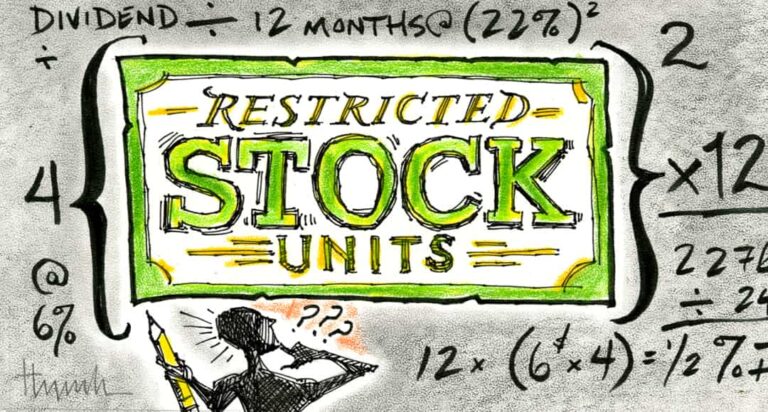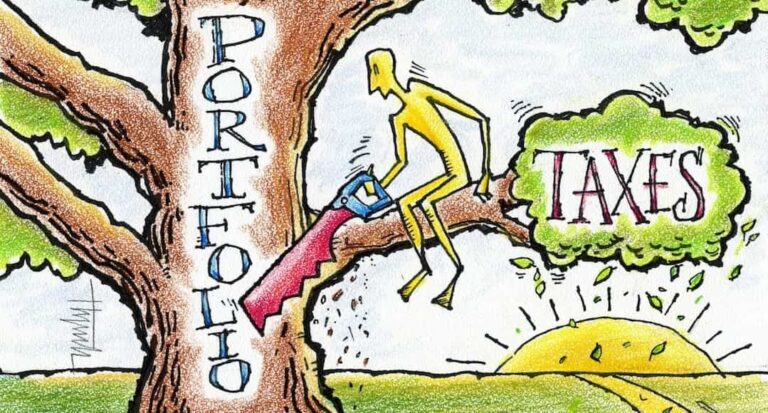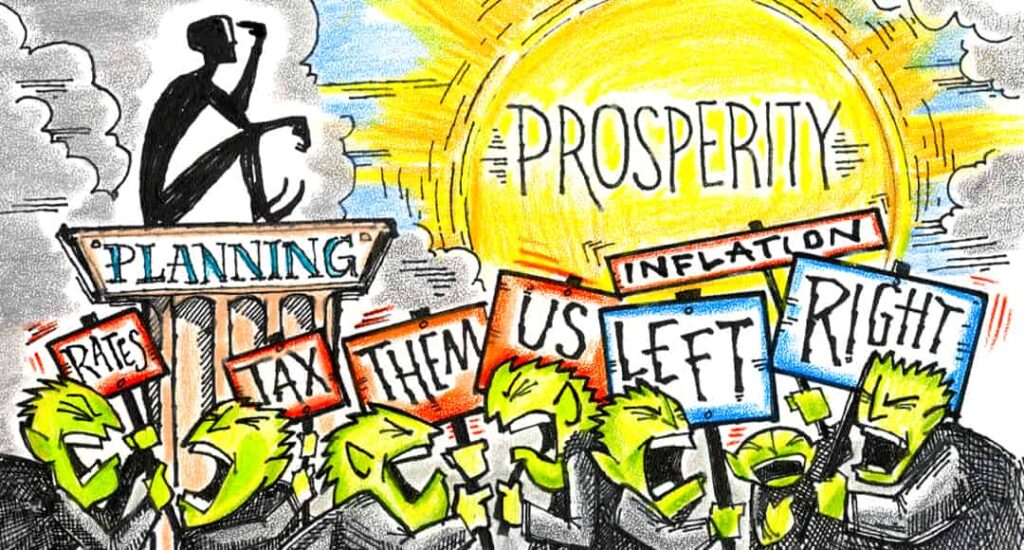
On Tuesday, November 5th, we will elect a new President of the United States of America. We will also wrestle over 34 (of 100) seats in the Senate, re-shuffle all 435 seats in the House of Representatives, and vote on countless ballot propositions. Leading up to this election, we’ve had two assassination attempts on one Presidential candidate, a very late change of candidates on the other side of the ballot, and plenty of additional chaos. In the backdrop of the campaign drama is a chasm between the major political parties’ opinions of what direction the country should take going forward.
In other words, we are coming to the conclusion of what has been the wildest election season many of us have ever witnessed, and you may be wondering, what does all this mean for my finances? At Golden Road Advisors, we understand the severity of the issues at stake and care very much about the country. With that said, our job is to manage finances. Therefore, this article focuses on the following question.
What Does This Election Mean For Your Money? (i.e., Ability to Finance Your Goals)
Let me start by saying that we strive to empower you to live a good life today while saving enough money for what could be a 40-year retirement. Or, if you are already in retirement, ensure you enjoy life to the fullest while maintaining confidence that your money will outlast you and not vice versa. We want to accomplish this through all economic conditions.
That means our priority must be to help strengthen financial positions now and over very long periods of time. Elections are always uncertain and scary. One side wins, the other loses. We vote on issues, and the outcome makes some people happy and others sad. Some industries can be big winners, and some can suffer devastating setbacks.
Every situation is unique, but we believe the following statements are factual:
- Life expectancies are rising. Therefore, we must plan for 30 to 40-year retirements.
- The cost of living is likely to double in a retirement of that length (An annual inflation rate of 2.4% over 30 years would double the cost of living).
- Therefore, we must increase purchasing power in retirement beyond the expected rate of inflation.
- Returns of the great companies of the world have historically done that. Therefore, it is essential to own stocks.
- Stocks are volatile and, historically, have frequently experienced temporary declines of 30% or more.
- The timing and duration of these declines cannot be consistently forecast.
The values of publicly traded companies are inherently volatile. Enterprises subject to being bought and sold every second of every business day will be impacted by many market forces including the omnipresent news cycle. Election years intensify awareness of current events, which can cause temporary increases in volatility.
This activity may affect stock values in the short term, but short-term ups and downs are not why we are owners of great companies. We own great companies because (historically) their values grow over time. This happens because great management teams adjust to changes in the market and find ways to make money despite headwinds, political or otherwise. Over the years, they continue to grow earnings. Companies that earn more should be worth more, and the stock market tends to recognize that growth in value over time.
Therefore, presuming you stay the course, elections should have little impact on your long-term ability to finance goals.
However, we know staying the course is easier said than done. When things are uncertain, many of us feel an impulse to act, even if such behavior is likely to reduce the long-term strength of our finances.
I want to further explore the concept that great companies find ways to grow earnings and, therefore, grow their values over time. Let’s look at a case study of a very simple business – one that makes toilet paper and soap.
Proctor and Gamble – A Case Study
Are any of the brands below used in your home? If so, you (along with millions of others) contribute to Proctor and Gamble’s earnings.

According to Proctor and Gamble’s 2024 Annual Report, the company enjoyed net sales of $84 billion with earnings of $15 billion. That’s a lot of toilet paper and soap sold at a profit! It is, therefore, no wonder that Proctor and Gamble has a value in excess of $400 billion (as of this writing)!
Here’s what the company’s leaders had to say about that:
“Our strategy has enabled us to build and sustain strong momentum, and remains the right strategy to deliver balanced growth and value creation. . . .”The model is dynamic and sustainable. It adapts to the changing needs of consumers, customers, and society and is focused on growing markets – creating versus taking business – the most sustainable and typically most profitable way to grow.”
How does a company that sells ubiquitous household items grow markets? Think of the small changes in your household over the years. For example, it seems to me the use of electronic toothbrushes, Febreze, and Swiffers has grown over the last few election cycles. For perspective, in 2016, Proctor and Gamble’s earnings were $10.5 billion on annual sales of $65.3 billion.
On July 1, 2016, the shares of Proctor and Gamble were worth $89.75. On July 1, 2024, they were trading at $162.72. When we look at the growth in earnings, it makes sense that the share price would be higher. That is how it should work.
But that is just one company and one that is arguably quite boring. The stock market is full of dynamic companies in various economic sectors. As believers in diversification, let’s take a look at a more extensive data set.
A Review of the Stock Market in Election Years
As we mentioned earlier, election-year stock market performance can, indeed, be volatile. That is one of the reasons why we diversify. Here is what happened to the values and earnings of companies in the S&P 500 Index during the 12-month calendar year surrounding the last ten presidential election cycles.
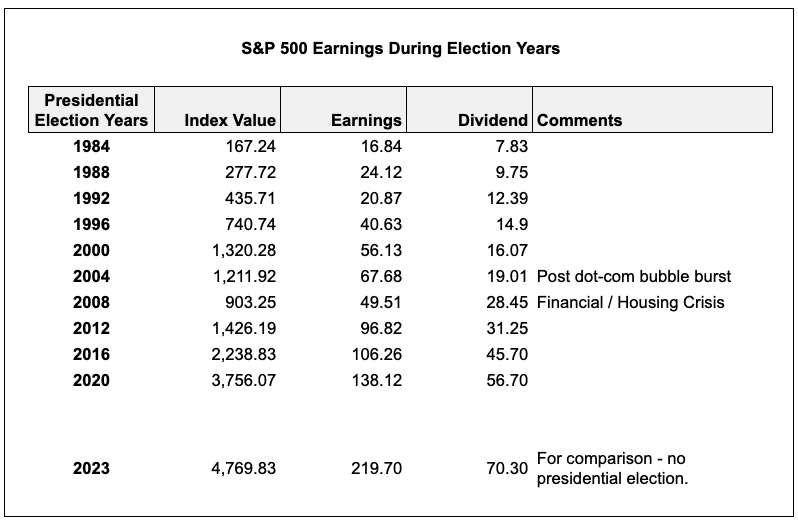
Data Source: NYU | Stern – Historic Earnings Changes Per Year S&P 500
And, just for fun, let’s plot those earnings over time.

Looking at Chart 1, you will see that the index bounced up and down between election cycles. However, when viewed through the perspective of ten election cycles (almost forty years), we see that it grew quite significantly. This is the story we are all used to being told.
However, the point I am trying to make is why it grew. For that, let’s focus on the second column of Chart 1 (we also show it in line form in Chart 2). What we see is long-term, average annual earnings grew from 16.84 to 219.70. That is about 13 times or 1200%. Also of importance is the third column labeled, “dividends.” We see dividends up almost 9 times or about 800%.
So, the aggregate earnings of the 500 companies went from 16.84 to 219.70, and the annual dividends went from 7.84 to 70.30. That is the main reason why the value of the index went up approximately 28 times! It was the companies’ growth in profits that fueled the growth in valuation.
Of course, there have been and will be down markets during presidential and non-presidential election years. However, the short-term ups and downs of the financial markets have more to do with business cycles (and fervor over various investing strategies, interest rate changes, etc.) than election cycles. And, over time, they recover from any setbacks.
These numbers are impressive, but are they strong enough to overcome historical inflation? Let’s take a look at this next chart.
Consumer Price Index (CPI) Readings in Election Years
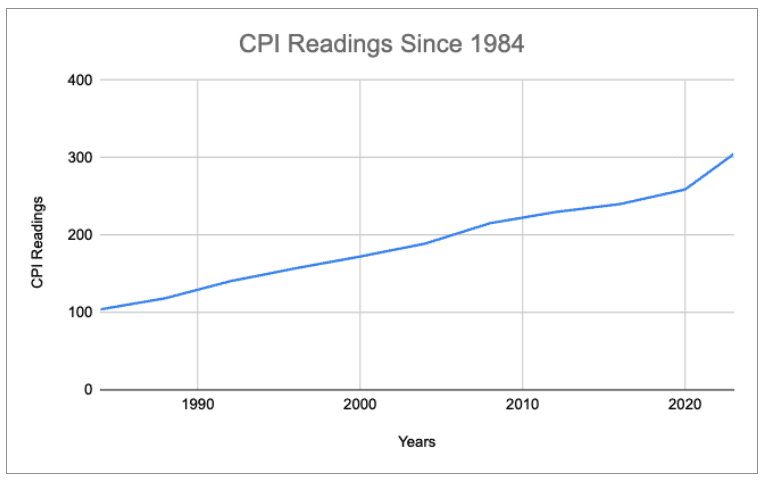
Data Source: Federal Reserve Bank of Minneapolis: Consumer Price Index, 1913-
Inflation almost tripled over the 40-year timeframe from 1984-2023. Yet, as we saw above, the dividends of the S&P 500 companies grew 3X that amount, thus growing purchasing power far above the rises in costs of living.
What can we learn from that? Again, don’t let the inevitable ups and downs of the stock market (due to election cycles or otherwise) scare you into a behavioral investment mistake. Investing (and staying invested) in the stock market has historically been a practical path to growing your purchasing power beyond cost of living increases.
The Stock Market During Election Years: Key Takeaways
In the United States, we have three branches of the federal government and many people involved in running the country. In a 40-year retirement, as many as nine presidents and thousands of senators and congresspeople will come and go. Global conflict and domestic challenges will continue to play out as they have throughout history.
At Golden Road Advisors, we don’t spend much time researching and speculating what will happen to market returns on election day or in the months pre and post-election. Instead, we focus on what we can control. When new tax rules or other relevant changes happen, we study them, partner with legal and tax advisors to gauge their potential effect on your future results, and make recommendations in an effort to proactively improve your financial outcomes.
We know elections are nerve-wracking. However, history has shown us that although they may affect volatility, elections have little impact on long-term stock market performance.
If you would like to revisit your financial plan to review strategy, make changes, or be reminded of the details, we welcome you to reach out. Until then, we hope you are living your life to the fullest, knowing that we are always here working to maintain the strength of your family’s finances.
Disclosure: The information provided is for educational and informational purposes only and does not constitute investment advice and it should not be relied on as such. It should not be considered a solicitation to buy or an offer to sell a security. It does not take into account any investor’s particular investment objectives, strategies, tax status or investment horizon. You should consult your attorney or tax advisor.
Author
-

Kevin Caldwell is a principal at Golden Road Advisors and a CERTIFIED FINANCIAL PLANNER™ (CFP®️) practitioner with over 15 years of experience in the financial services industry. In addition to providing advice and guidance to clients, he regularly contributes to publications such as Kiplinger, Yahoo! Finance, Dalbar, and MarketWatch.
View all posts

